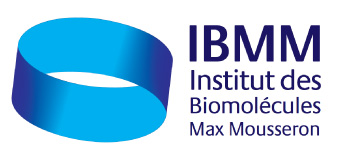PhD Proposal IBMM – University of Heidelberg
Synthesis and Evaluation of New RNA modifications in Biology
Context: While RNA was considered for many decades as a very simple biomolecule composed of only four monomers it’s becoming increasingly evident that RNA modifications are pivotal players in diverse biological processes and have implications in various human diseases and disorders. However, our understanding of these crucial molecular features remains incomplete, hindered by current technological limitations. Among these modifications, the NAD+-5′-CAP refers to a molecule of nicotinamide adenine dinucleotide (NAD+), a nucleosidecontaining metabolite, covalently bonded the 5’-end of cellular mRNA identified in a variety of species, from bacteria to mammals. Utilization of NAD as an RNA cap might provide a direct mechanism by which alterations in cellular NAD metabolism can be linked to alterations in gene expression. Studies of NAD capping may thus represent a new frontier for understanding the interplay between cellular metabolism and RNA biology.
Project: Existing methods for synthesizing NADcapped RNAs are beset with inefficiencies and procedural complexities, hampering our ability to achieve site-specific dual modifications. This limitation poses a significant bottleneck to progress in RNA modification research. In this context, the PhD research project aims to synthesize 5′-NADcapped RNA. While the synthesis of these modified RNA will be made in Montpellier, capping, decapping, and binding assays with various enzymes and proteins, will be evaluated in Heidelberg. These studies will generate novel insights into RNA modification mechanisms. Considering the centrality of NAD in redox chemistry and post-translational protein modification, its attachment to RNA represents potentially undiscovered pathways in RNA metabolism and regulation. The precise role of non-canonical caps is still largely unknown. Studying and understanding their associated mechanisms opens up new prospects in the field of epitranscriptomics, which may link cellular metabolism to gene expression.

Teams Involved: Research into RNA modifications requires a multidisciplinary approach. Combining complementary skills in chemistry, molecular biology and biochemistry is essential for studying the complex mechanisms of NAD+ caps. Recently, the Jaschke Lab (https://www.jaschkelab.de/) at the University of Heidelberg has made substantial contributions to the study of NAD-modified RNAs.[4] In the mean-time the ChemBioNAC (www.chembionac.com) team developed a strong expertise all-solid-phase strategy for synthesizing capped RNAs, including those with dual modifications.[5] The PhD will be mainly located at the University of Montpellier. During coordinated research mobility stays, the PhD candidate will join the Jäschke lab, learn the respective methods, and participate in the generation of in vitro data. Additionally, biologists in the Jäschke lab will utilize these compounds for in vivo studies.
To apply: The candidate will ideally possess a solid background in organic synthesis and a demonstrated interest in Nucleic Acid Chemistry and/or life sciences. Send CV, score tests and cover letter to Prof. Michael Smietana () and Prof. Andres Jäschke ().
References: [1] a) Jäschke, A.; Höfer, K.; Nübel, G.; Frindert, J. Cap-like Structures in Bacterial RNA and Epitranscriptomic Modification. Curr. Opin. Microobiol. 2016, 30, 44–49. b) Zhang, Y; Kuster, D.; Schmidt, T.; Kirrmaier, D.; Nübel, G. Ibberson, D.; Benes, V.; Hombauer, H.; Knop, M.; Jäschke, A., L. Extensive 5′-surveillance guards against non-canonical NAD-caps of nuclear mRNAs in yeast. Nat. Comm. 2020, 11, 5508. [2] a) Noël, M.; Guez, T.; Thillier, Y.; Vasseur, J-J.; Debart, F. Access to High-Purity 7mG-cap RNA in Substantial Quantities by a Convenient All-Chemical Solid-Phase Method. ChemBioChem, 2023, 24, e202300544. b) Thillier, Y.; Decroly,E.; Morvan, F.; Canard, B.; Vasseur, J-J.; Debart, F. Synthesis of 5′ cap-0 and cap-1 RNAs using solid-phase chemistry coupled with enzymatic methylation by human (guanine-N7)methyl transferase RNA 2012, 18, 856–868.
